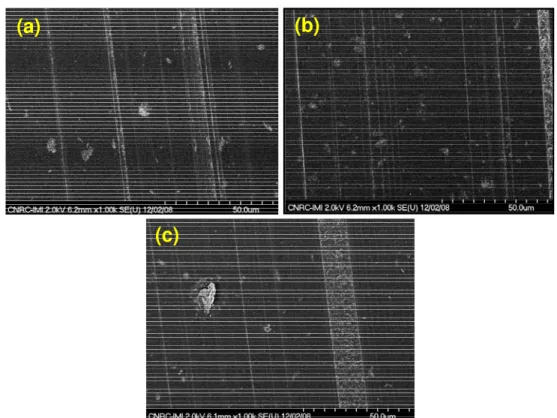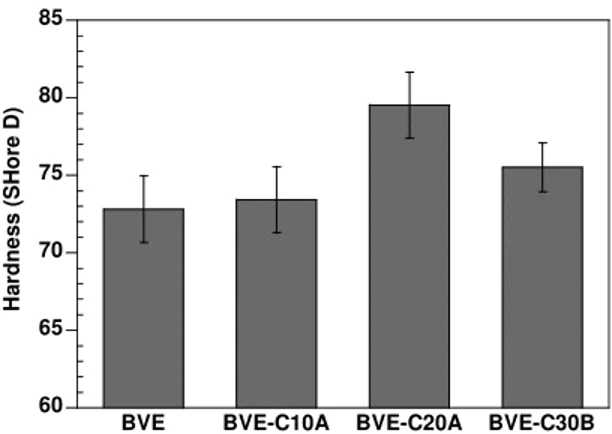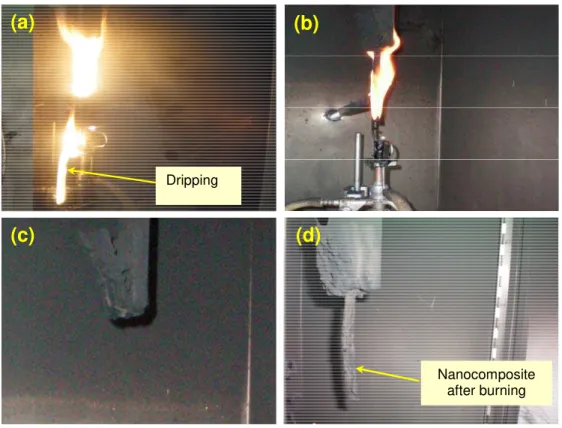Publisher’s version / Version de l'éditeur:
Proceedings of the 17th international conference on Composite Materials (ICCM-17),, 2009-07-27
READ THESE TERMS AND CONDITIONS CAREFULLY BEFORE USING THIS WEBSITE.
https://nrc-publications.canada.ca/eng/copyright
Vous avez des questions? Nous pouvons vous aider. Pour communiquer directement avec un auteur, consultez la
première page de la revue dans laquelle son article a été publié afin de trouver ses coordonnées. Si vous n’arrivez pas à les repérer, communiquez avec nous à PublicationsArchive-ArchivesPublications@nrc-cnrc.gc.ca.
Questions? Contact the NRC Publications Archive team at
PublicationsArchive-ArchivesPublications@nrc-cnrc.gc.ca. If you wish to email the authors directly, please see the first page of the publication for their contact information.
NRC Publications Archive
Archives des publications du CNRC
This publication could be one of several versions: author’s original, accepted manuscript or the publisher’s version. / La version de cette publication peut être l’une des suivantes : la version prépublication de l’auteur, la version acceptée du manuscrit ou la version de l’éditeur.
Access and use of this website and the material on it are subject to the Terms and Conditions set forth at
The potential bio based polymer and their nanocomposites for
composites structure
Ngo, T.-D.; Singh, R. Pal; Ton-That, M.-T.; Hoa, S. V.
https://publications-cnrc.canada.ca/fra/droits
L’accès à ce site Web et l’utilisation de son contenu sont assujettis aux conditions présentées dans le site LISEZ CES CONDITIONS ATTENTIVEMENT AVANT D’UTILISER CE SITE WEB.
NRC Publications Record / Notice d'Archives des publications de CNRC: https://nrc-publications.canada.ca/eng/view/object/?id=d4af2d29-8bf5-4af6-acf8-d07600a6e975 https://publications-cnrc.canada.ca/fra/voir/objet/?id=d4af2d29-8bf5-4af6-acf8-d07600a6e975
THE POTENTIAL BIO BASED POLYMER AND THEIR
NANOCOMPOSITES FOR COMPOSITES STRUCTURE
T.-D. Ngo1, R. Pal Singh2, M.-T. Ton-That1,2, S. V. Hoa2
1National Research Council Canada, Industrial Materials Institute
75 De Mortagne Blvd., Boucherville, Quebec, Canada J4B 6Y4
2
Department of Mechanical & Industrial Engineering, Concordia University 1455 De Maisonneuve Blvd., Montreal, Quebec, Canada H3G 1M8
SUMMARY
The nanocomposites from bio based vinyl ester (BVE) and different types of nanoclay were studied. The quality of dispersion and intercalation/exfoliation of nanoclay in BVE was analyzed by means of X-ray diffraction (XRD), field emission gun scanning electron microscopy (FEGSEM). Hardness, mechanical properties and fire resistance of the BVE and its nanocomposites were evaluated. The presence of nanoclays results in increase in the mechanical properties, and fire resistance of BVE. The BVE exhibits a good potential for composite application.
Keywords: bio based polymer, vinylester, thermoset, nanoclay, nanocomposite.
INTRODUCTION
Because of environmental concerns, the commercial utilization of biological polymers has become the subject of active research during the last ten years [1, 2]. Bio-based polymeric materials from renewable resources are of significant importance from both industrial and economic viewpoints. Soybean oil is a renewable raw material for a wide variety of industrial products, including inks, plasticizers, and paints. Epoxidized soybean oil (ESO) shows excellent promise as an inexpensive renewable material for industrial application [3, 4]. However, oil-based polymeric materials alone do not have comparable rigidity and strength as traditional petroleum-based ones. In addition, bio-based thermoset polymeric materials have not been well studied. In this work the potential of nanoclays in upgrading the oil-based vinylester resins will be discussed.
EXPERIMENTAL
The BVE was prepared from epoxidized soybean oil (ESO) and acrylic acid in the presence of pyridine as a promoter. Styrene monomer was used as crosslink agent. The organo-nanoclays used were Cloisite® 10A (C10A), Cloisite® 20A (C20A) and Cloisite® 30B (C30B) from Southern Clay Products, Inc. (Gonzalez, TX, USA). Nanocomposites were prepared using the three roll mills mixer. Nanoclays were mixed with BVE by hand for few minutes then passed through the three roll mills mixer. Styrene was added into the mixtures at 90 to 100% by weight compared to BVE. Materials were cured with methylethylketone peroxide as initiator, and cobalt naphthenate as promoter.
To evaluate the intercalation/exfoliation of the nanoclay in the BVE matrix, X-ray diffraction (XRD) patterns were obtained from the surface of the samples with a Bruker Discover 8 powder X-ray diffractometer with CuKα radiation. The experiments were conducted on the exposed surface of specimens prepared by casting. A Hitachi-S4700 field emission gun scanning electron microscope (FEGSEM) was used to observe the dispersion of clay in the BVE matrix at the micro-level. The tensile properties of the BVE with and without clay were determined at room temperature according to ASTM D638-02 on an MTS Instron machine with crosshead speed of 5 mm/min. The hardness of BVE and BVE nanocomposites was determined at room temperature and relative humidity of 50% according to ASTM D2240-00 using a Shore Conveloader Instrument. Vertical burning tests were conducted using an automatic vertical flammability tester (model VC-2) manufactured by the Govmark Inc. After applying the flame to the sample for 10 s, the gas was automatically turned off. The after flame time for the sample is recorded.
RESULTS AND DISCUSSION
The X-ray diffraction curves of BVE nanocomposites shown in Figure 1 indicate that the quality of intercalation/exfoliation is depending on the chemistry of the clay. The C20A seems to have better intercalation/exfoliation in the BVE matrix compared to C10A and C30B. The peak almost disappears on the XRD curve for BVE-C20A while the peaks still exist for BVE-C10A, and BVE-C30B. However, the C10A seems to have better intercalation/exfoliation in the BVE matrix than C30B.
0 500 1000 1500 2000 2500 3000 2 4 6 8 10 In te n s it y (C o u n ts) 2θ (o) BVE BVE-C10A BVE-C20A BVE-C30B
Figure 1. XRD for BVE and BVE nanocomposite with different nanoclays
The microstructures of nanocomposite samples observed by FEGSEM are shown in Figure 2. The bright spots on the backscattered images correspond to clay aggregates. Apparently, a portion of the clay remains at the micro-scale level with different size populations depending on the type of clay. As can be seen in Figure 2b (sample with C20A), there is a uniform distribution of particles in the matrix BVE compared to these other clays. C10A also disperses quite well in the BVE, however, it not uniform distribute as C20A. From the results of XRD and FEGSEM, one can speculate that
C20A clay has been dispersed and intercalated/exfoliated better compared to C10A and C30B in the BVE.
(a)
(b)
(c)
Figure 2. FEGSEM for BVE and BVE nanocomposites with different clays: (a) C10A, (b) C20A), and (c) C30B
The surface hardness of the BVE samples with and without clay was determined at room temperature and the results are shown in Figure 3. As expected, adding nanoclay increases the surface hardness of BVE [5]. However, the level of increase in the hardness is also depending on the type of nanoclay. From the above Figure 3, it is quite evident that the C20A has shown considerable improvement in the surface hardness of the BVE than the rest of the other clays. Clay has a much greater surface hardness because of its ceramic nature. Therefore, adding the clay in BVE results increasing in its surface hardness. Furthermore, the better dispersion and better intercalation/exfoliation of the clay C20A in the BVE system may also be a contributing factor. This may explain the reason why the surface hardness of BVE with the presence of C20A is higher than BVE with the other clays
60 65 70 75 80 85
BVE BVE-C10A BVE-C20A BVE-C30B
H a rdn e ss (S Hore D )
Figure 3. Surface hardness for BVE and BVE nanocomposites with different nanoclays at 2wt%
Flame time for BVE sample and its nanocomposites with different clays by using the vertical burning test is shown in Figure 4. The results indicate that the presence of clay slow down the spread of flame for the BVE especially nanoclay C20A. Thus, the presence of nanoclay improves the burning time for BVE. Figure 5 shows the photos of the BVE and BVE nanocomposite during and after the burning. It is clearly indicates that the BVE sample drips during the burning and the sample is burned out at the end while the nanocomposites do not drip and the samples are remain its shape after burn, especially with the presence of C20A. It is speculated that the clay helps to form char during burning and slow down the burning [6]. It can be considered as one of the mechanism for an improvement in fire resistance of clay. The remaining of the nanocomposite structure during and after burning also proves the potential of this material for some structure application. In this case, the flame does not spread to other locations when the structure burns.
200 220 240 260 280 300
BVE BVE-C10A BVE-C20A BVE-C30B
B u rn in g ti me (se c o nds )
Figure 4. Burning time for BVE and BVE nanocomposites with different nanoclays at 2wt%
Nanocomposite after burning Dripping
(a)
(b)
(d)
(c)
Figure 5. Flammability behavior of BVE and its nanocomposites during burning: (a) BVE, (b) BVE nanocomposite; and after burning: (c) BVE, (d) BVE nanocomposite
From the above results, further analysis for mechanical properties of the BVE-C20A is focused. The effect of C20A concentration on the tensile property of the BVE is shown in Figure 6. The presence of nanoclay C20A increases the tensile modulus and tensile strength of this BVE system but does not linearly with the nanoclay loading. The increase in tensile modulus seems to reach a plateau at between 2 wt% clay loading. It may be because of the poorer dispersion of clay in this system at higher clay loading (4 and 6 wt%) and it results in lower properties compared to 2 wt%.
1000 1500 2000 2500 BV E BV E-2 % C2 0A BV E-4% C2 0A B VE-6% C 2 0 A Te n s il e M o d u lus ( M P a ) 0 10 20 30 40 BV E BV E-2 % C2 0A BV E-4% C2 0A B VE-6% C 2 0 A T e n s il e S te n gt h (M P a )
Figure 6. Tensile properties for BVE and BVE-C20A nanocomposites at different clay loadings
CONCLUSIONS
Nanoclay increases the mechanical properties and fire resistance for BVE even with only 2 wt% clay. It is also interesting to note that the mechanical properties if the BVE systems are quite acceptable and the addition of nanoclays made it close to the properties of traditional thermoset systems for composites application. It promises the potential for the application of BVE nanocomposites.
ACKNOWLEDGEMENTS
We would like to thank the Natural Science and Engineering Research Council of Canada for funding for this project (grant N00784-Development of Polymer Nanocomposites- and grant N 00004-Stress Analysis and Vibration for elastic and viscoelastic systems).
References
1. D. P. Mishra, P. A. Mahanwar, Advances in bioplastic materials, Pop. Plast. Packag., 45 (7), 68-76, 2000
2. J. Schroeter, Biodegradable plastic materials, Kunststoffe, 90 (1), 64-6, 2000 3. Kaplan D. L. Biopolymers from renewable resources; Springer-Verlag, Berlin,
p. 267, 1998
4. Li F. K.; Larock R. C. J. Appl. Polym. Sci., 80, 658-670, 2001
5. T.-D. Ngo, M.-T. Ton-That, S. V. Hoa, K. C. Cole, Journal of Applied Polymer Science, 107, 1154-1162, 2008




